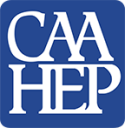
Using ultrasound technology to create images for assessment and diagnosis.
A diagnostic medical sonographer is a highly skilled professional who provides patient care services. The sonographer uses specialized sonographic equipment to create images of structures within the human body. Sonographers have direct patient contact and may provide this service in a variety of medical settings where the physician is responsible for the use of and interpretation of appropriate procedures. LLCC’s program prepares students to secure their American Registry of Diagnostic Medical Sonography credentials and entry-level work in the abdomen and obstetrics/gynecology specialty areas. Vascular instruction is also included in the coursework.
Degrees and Certs
LLCC offers an associate in applied science degree (AAS) in diagnostic medical sonography. Click the link below to learn more about the required courses for this program.
Other Sonography Programs
Are you already a certified sonographer interested in adding a vascular sonography credential? Let us help you! The LLCC Vascular Sonography certificate might be just what you need to accomplish your goal.
If you are interested in imaging the heart and vascular systems, the Cardiovascular Sonography (CVS) AAS degree program covers two ultrasound specialty areas: adult echocardiography and vascular sonography. The CVS program begins each summer and takes approximately two years to complete. Contact your student success advisor for more information.
Job Outlook
Cost
For the 2025-2026 academic year (fall 2025, spring 2026 and summer 2026), diagnostic medical sonography (DMS) classes have a tuition rate of $287 per credit hour for in-district residents. The total estimated cost of tuition, variable tuition and standard fees is approximately $16,897 for the DMS AAS program. Get more information on tuition and fees.
There are separate costs for books, uniform expenses, a clinical tracking system, registry exam fees and other program requirements.
Paying for college
Learn more about cost of attendance.
There are ways to get help paying for college. Learn more about paying for college.
Support available

The Pipeline for the Advancement of the Healthcare Workforce (PATH) program provides financial and other supports for occupations within the health care field. Learn more about PATH, including support services, programs and eligibility.
Start/Info Session
Applications for the class starting in June 2026 will be accepted from April 1, 2025 through 5 p.m. on Feb. 6, 2026, or until filled.
Attend an information session
Students are required to attend a sonography information session before applying to the program. If you are interested in this career, register for an information session and fulfill this requirement for admission. Session dates and times vary, and all sessions are held online via Microsoft Teams (a link will be emailed to you the day before the scheduled meeting date).
Next steps
To help ensure that students are successful, our program has special requirements in order to be eligible to apply to the program admission. To prepare for applying to the program, please follow the steps on the DMS How to Apply page.
If you have questions regarding program admission requirements or how to apply, please call LLCC Student Success at 217-786-2224 and request to speak with a health professions student success advisor.

